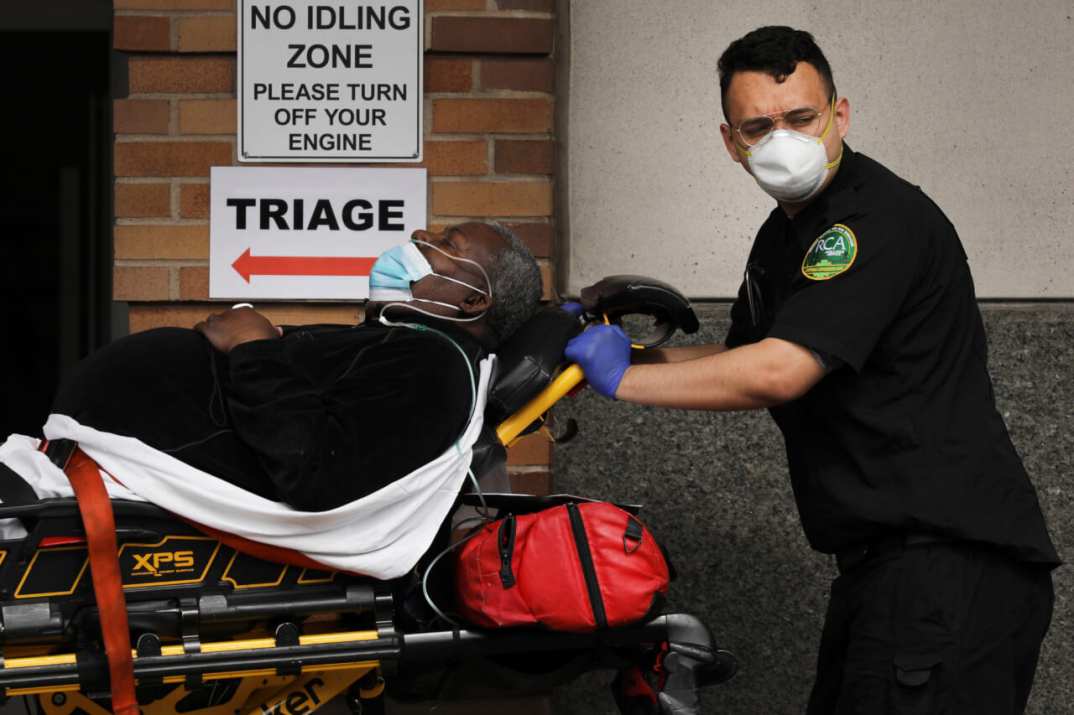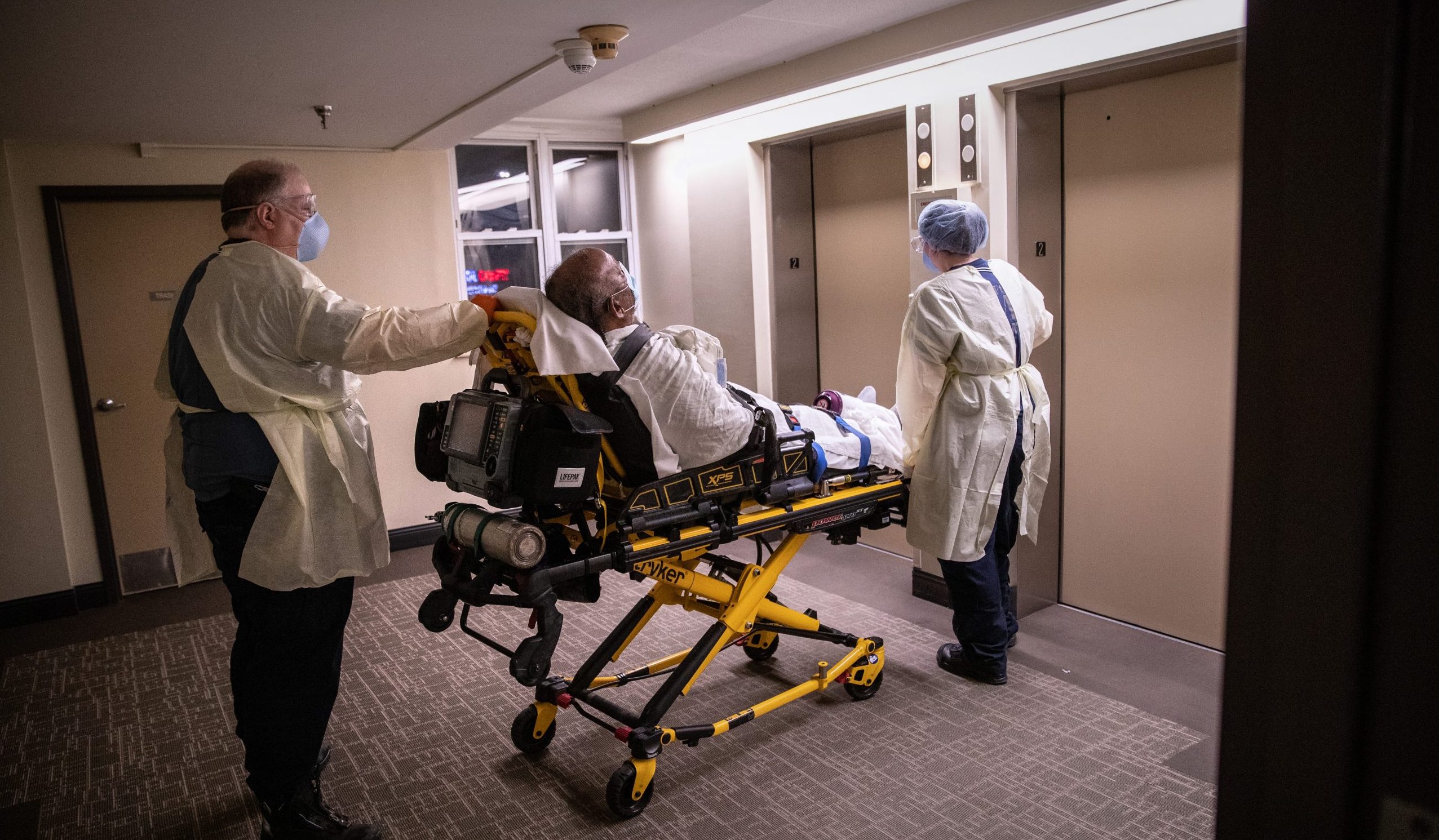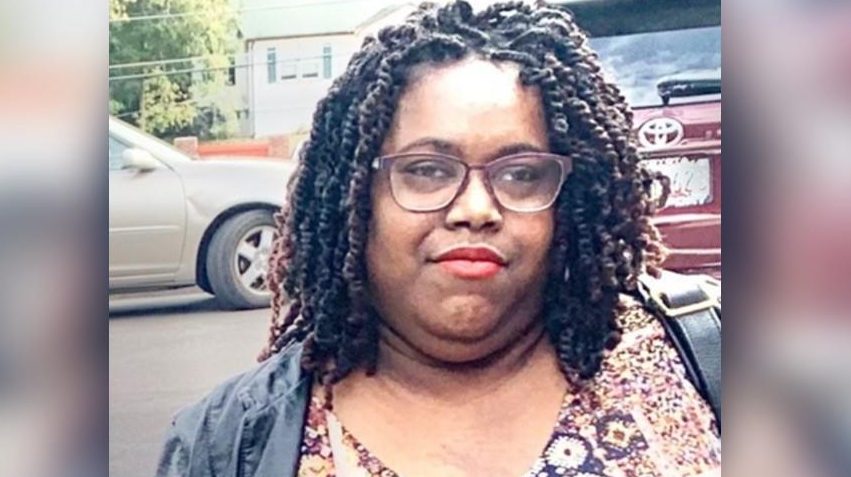COVID-19 is ravaging one of the richest Black counties in the U.S.
A predominantly black and affluent community is hit hard by the virus.

The coronavirus has been disproportionately impacting the Black community and Prince George’s County, Md. has become a prime example.
The predominantly African-American suburb of Washington, D.C., where the average African-American income is $100K, has seen a surge in cases and in deaths.
READ MORE: Georgia mother of twins, 36, dies of coronavirus with no underlying issues
The Washington Post recently reported that the county has been inundated with the sick. Parking lots have been turned into makeshift trauma centers to offer care as the ICU’s are full. Funeral directors are running out of places to store the increase of bodies as the death toll from COVID-19 rises.

Medics wearing personal protection equipment (PPE), transport an African American patient showing COVID-19 symptoms from his apartment on April 04, 2020 in Stamford, Connecticut. (Photo by John Moore/Getty Images)
Seventy percent of the county’s 900,000 residents are from a minority background. Many of them are front-line workers in professions like maintenance workers and education who have been exposed to the virus. Others have underlying health issues such as diabetes, hypertension, and obesity.
To date, 130 African American, 15 Latino, and 19 white people have died because of the novel coronavirus in PG County, according to current data.
“It’s served as a magnifying glass for challenges we knew we had,” said county executive Angela D. Alsobrooks (D). “We know that when this is over, we can’t return to business as usual.”
Local hospitals are experiencing an overflow with double the patients of those who have tested posted for COVID-19 at other hospitals. At the moment, Prince George’s Hospital Center in Cheverly has a fatality rate of about 7.2 percent, much more than the other 12 hospitals in the University of Maryland Medical System.
Stephen B. Thomas, head of the Maryland Center for Health Equity at the University of Maryland, says that the disease is highlighting the disparities that already existed in the health system.
“It is a function of how society treats you — whether you need to go to the hospital, or the ICU or need a ventilator,” Thomas said.

Leilani Margurite Jordan
Zenobia Shepherd, whose daughter Leilani, a resident of Upper Marlboro, Md. died in March due to the virus, spoke of how Jordan wanted to make a difference to those who were having difficulty.
READ MORE: Maryland grocery clerk with cerebral palsy dies of coronavirus
“She said, ‘Mommy, I’m going to work because no one else is going to help the senior citizens get their groceries,’ ” Shepherd said. “She only stopped going to work when she could no longer breathe.”
Jordan also added that she had trouble finding masks in which to cover her face at her local pharmacy. However, there were plenty available across the river in Alexandria, Va. She was further angered that underlying health issues were a possible reason many in the Black community were being turned away from urgent care.
“It’s not right; it’s not right,” Shepherd said. “I’m not going to allow underlying conditions be an excuse for how the black community is being treated in certain communities.”
Bernadette Christian, a cashier at the Giant in Camp Springs, Md, said that those with lower incomes had no choice but to continue working through these circumstances. She has had to deal with angry grocery shoppers, co-workers dying, and not enough personal protection to keep the deadly contagion at bay.
“People have got to eat,” she said. “You’ve got to eat. You cannot not go to work.”
Have you subscribed to theGrio’s new podcast “Dear Culture”? Download our newest episodes now!
https://open.spotify.com/episode/6kzjPmeakob2uRdrGhGFaJ
https://open.spotify.com/episode/3BGIlfF2N2d2NFEzBnxVLh
